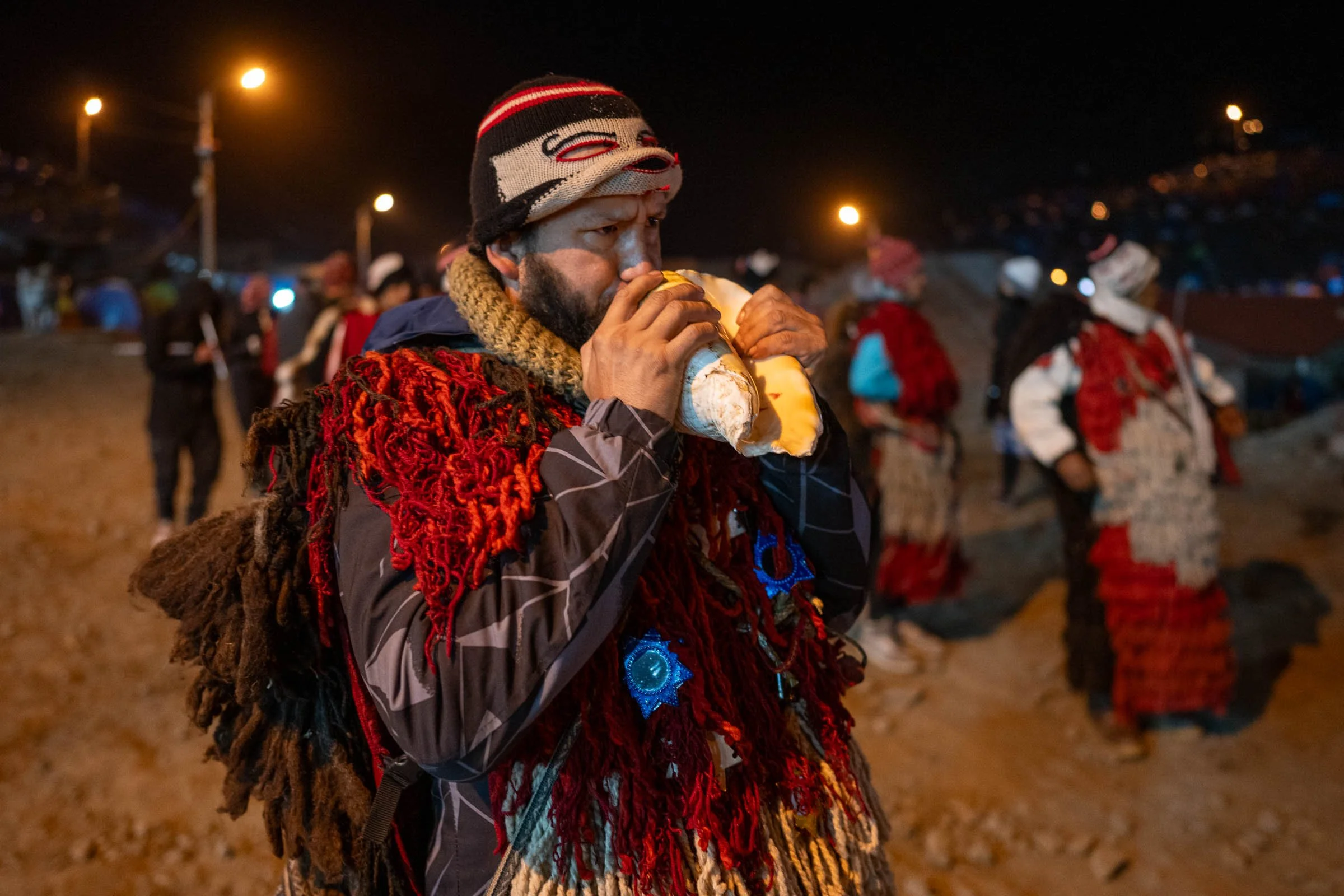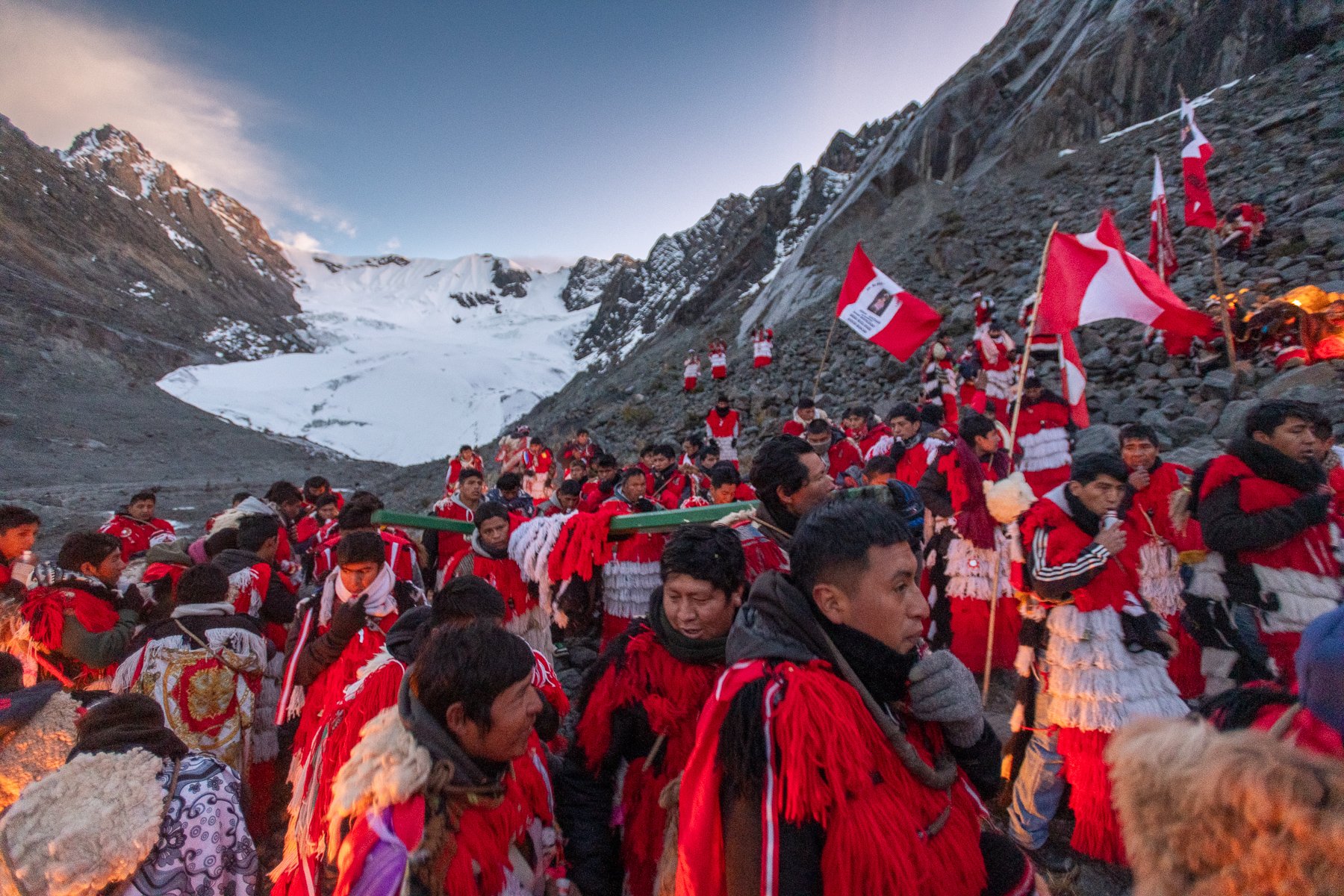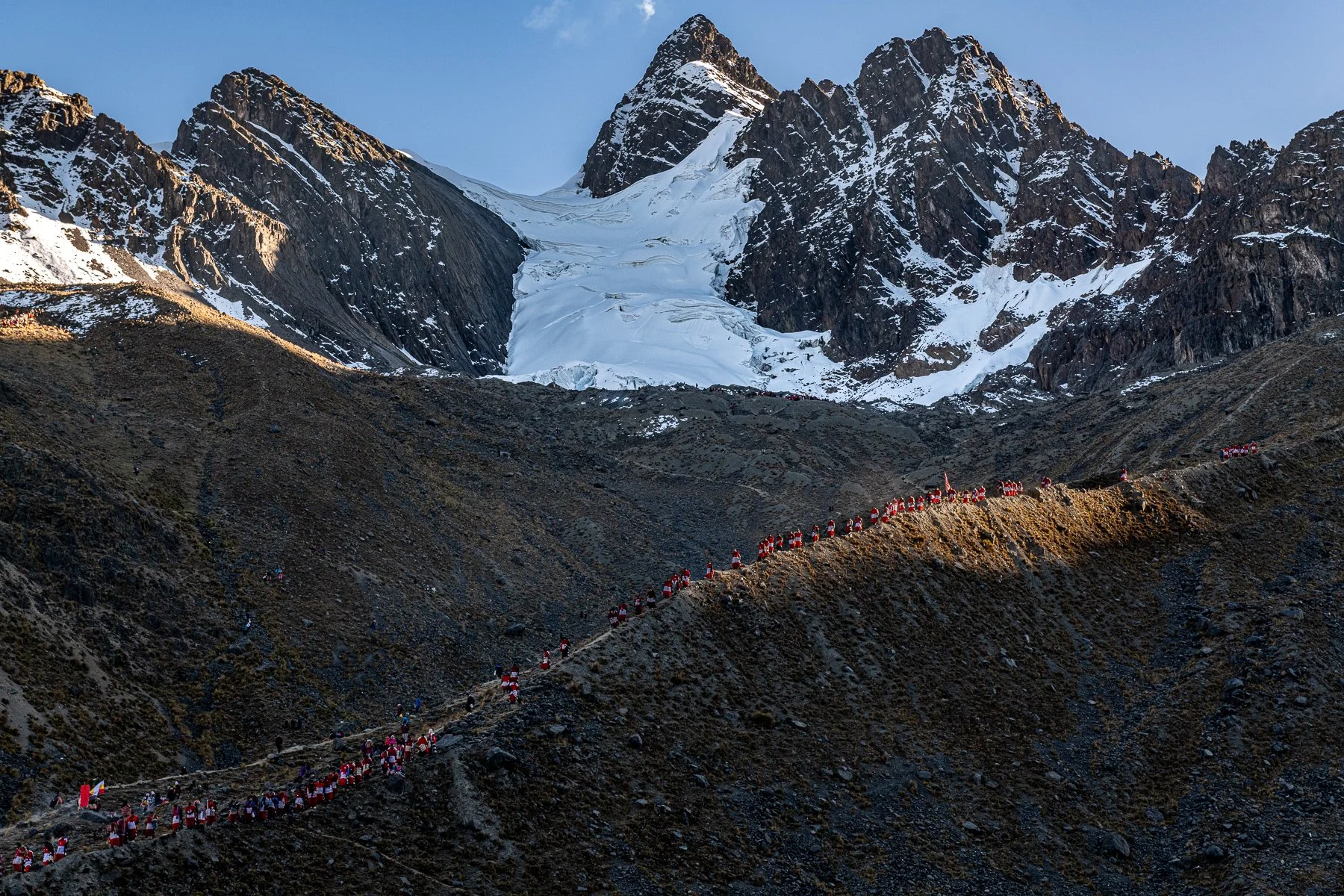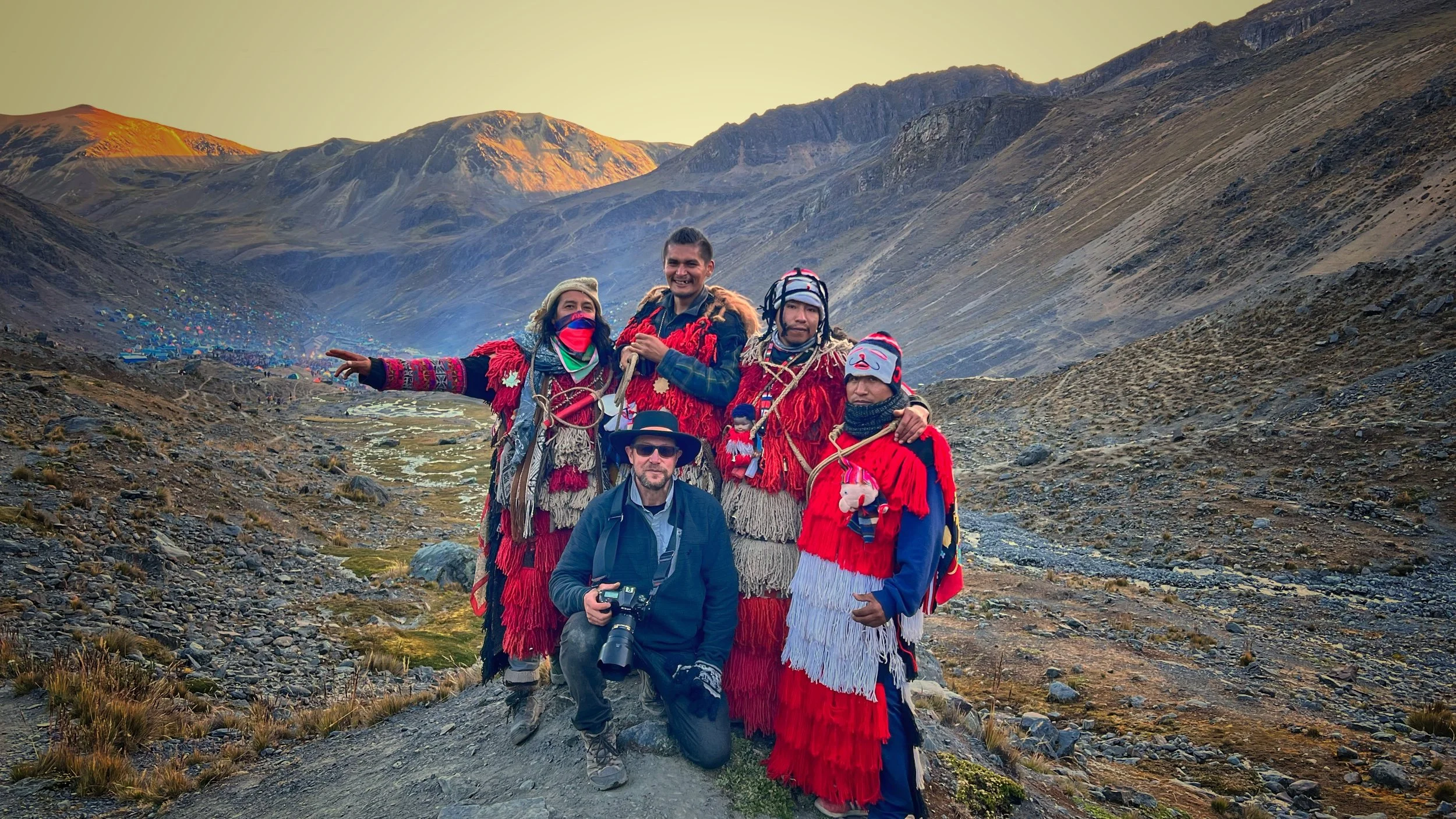Qoyllur Rit’i - Part 5
After a few hours of rest, the group gathered around the fire for warmth and tea while the music and dance continued through the night. Once some energy was mustered, the Ukukus worked their way through the throngs of pilgrims to begin their ascent shortly after 2 am.
With just the light of the moon to guide their way, the Ukukus climbed back up the mountain and eventually came together near the base of Sinkara glacier. By 4 am a few hundred of the Ukukus had gathered near the base of the glacier huddling close together around large candles.
They remained massed upon on the cold rocks like this waiting for sunrise. They chewed coca leaves and sipped on hot distilled alcohol and tea that was passed around. As they huddled, different leaders gave talks on behalf of their group. Unfortunately, I was unable to understand most of what was said.
I knew that I would have no ability to charge batteries on the trip. I had brought multiple in preparation and thought I had plenty for the entirety of the festival. The cold had depleted them more quickly than I had anticipated and one had completely failed. I was dangerously close to running out of battery power.
Being in such an incredible place with such an amazing opportunity, the possibility of running of out battery power was freaking me out a bit. This is a mortal sin as a photographer, especially at such a crucial moment. I held my angst at bay and tried to keep the batteries warm in my pockets. I needed to be very economical with the photos I made at this point.
Once the first light of dawn appeared, the cross was removed from the base of Sinkara glacier and brought into the center of the group. Prayers were made and more floggings given before they began carrying the cross back down the mountain. Other groups of Ukukus and Comparsas lined the valley and cliffsides while the procession was led by the Paqo (Andean priest).
Once again the valley was filled with song and dance as the procession made its way through the congregation of people. When they approached the valley bottom, the procession came to a halt when the first rays of the sun hit the cross. Everyone stopped and bowed before the sunrise with songs of prayer before continuing on. The procession finished with the cross being brought into the church where hordes of pilgrims congregated inside and out, and a dawn church service took place.
It was an incredible experience and I truly felt honored to be welcomed and to be part of such an amazing event. It was like nothing I have experienced before and is the perfect example of the Quechua culture’s syncretic nature. Their culture has survived by adapting to their new hosts while maintaining their own identity. It is at the very essence of the project I am here to document.
It was a balancing act the entire time. I did my best to be present and appreciate the moment yet do the job I was there to do. I also wanted to be mindful and respectful of the importance of Qoyllur Rit’i to the people. There was the occasional person that was unhappy with my presence who furrowed their brow and barked at me. However, the Ukukus defended me and made sure I felt welcomed and accepted.
I witnessed other photographers, both foreign and Peruvian, that were shunned and shooed from attending the inner ceremonies. Its significance was not lost on me. I have been invited to return again next year and have been given my own Ukuku tunic to wear at next year’s festival. The membership to the group is symbolic of course, but still an incredible honour which I appreciate deeply.
It is a good thing that I am returning next year as I feel there Is more of the story to tell and I was not able to partake in the final ceremony. Due to the lack of battery power, I would not have been able to document it. Also, I don’t think my body which was crumbling beneath me, would have been able to do the 18-hour hike through the night for the next days’s sunrise ceremony. Now I know what I am in for next year and I can better prepare.
Part of a pilgrimage is enduring the difficulties of the journey, and there was no shortage of it on this one. I had to reach deep and rail against the pain in my back, hips, and knees. There was plenty of time to reflect upon the reality of time and gravity’s impact on my body and the challenges I am facing doing this project at my age. Much of what I need to do to complete this project will require a certain amount of suffering in different forms. I only hope my body can withstand it.
After some heartfelt and emotional goodbyes to the group, I made the descent back down to Mahuayani. I had the assistance of a horse this time so I only had to carry my photo equipment which made the trek much quicker and far less painful.
Sadly, the trip was marked by death at both ends of the pilgrimage. When I arrived in Mahuayani a group carried the body of an Ukuku that had fallen from the cliff during the cross procession that morning. I did not see it when it occurred but his body passed before me at the very end of my pilgrimage.
In my incredibly tired state, it was emotional and more to process while I made the journey by bus back to Cusco. There was a lot to reflect upon and not much time to do so. More festivals were taking place in Cusco that I would immediately have to get to and photograph upon my return.
Those images and stories are coming soon. In the meantime, I am on high alert as protests are being called for again. The first is scheduled to take place this evening in Cusco and national protests are being called for in the coming weeks. Hold on tight, here we go again…
MB











